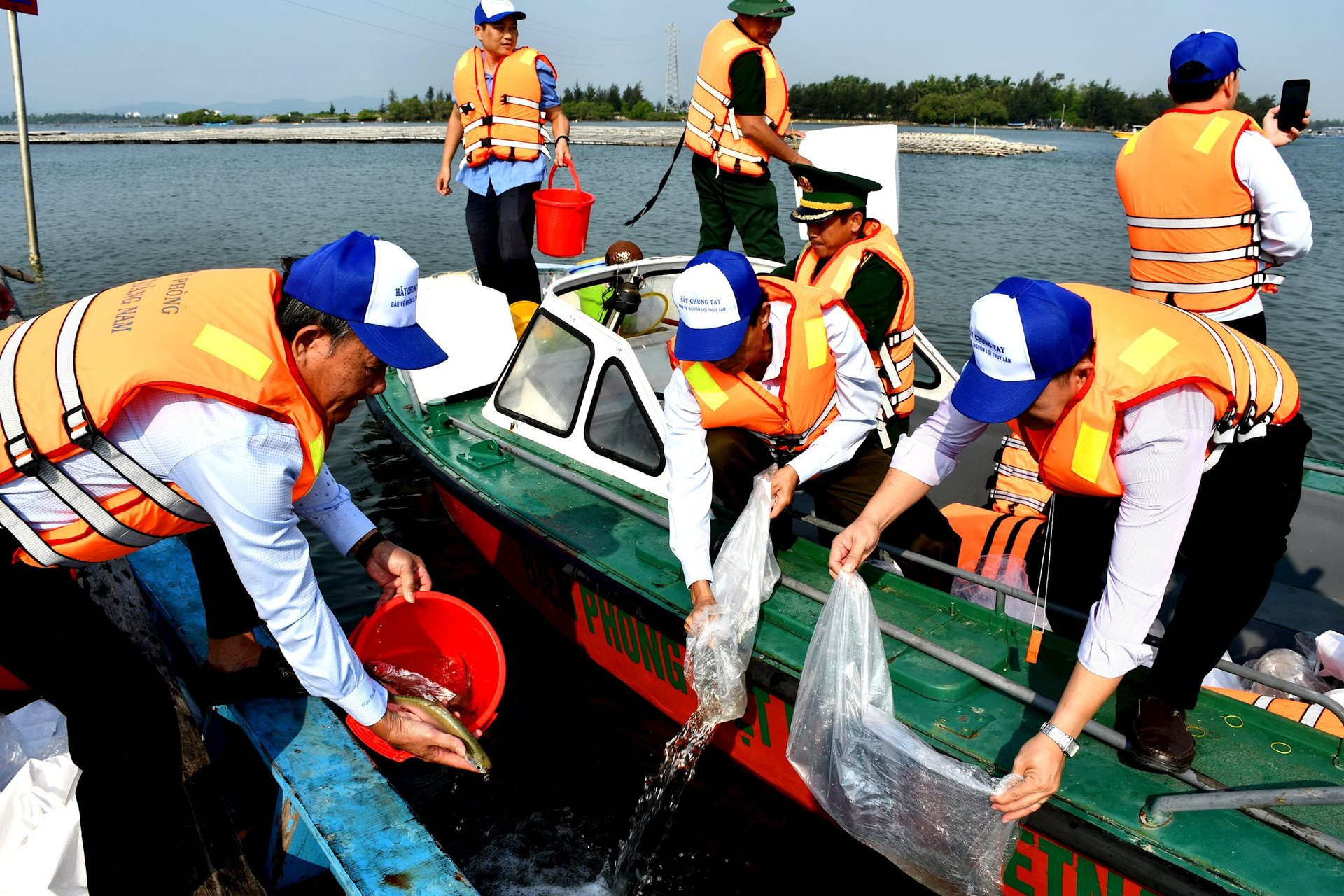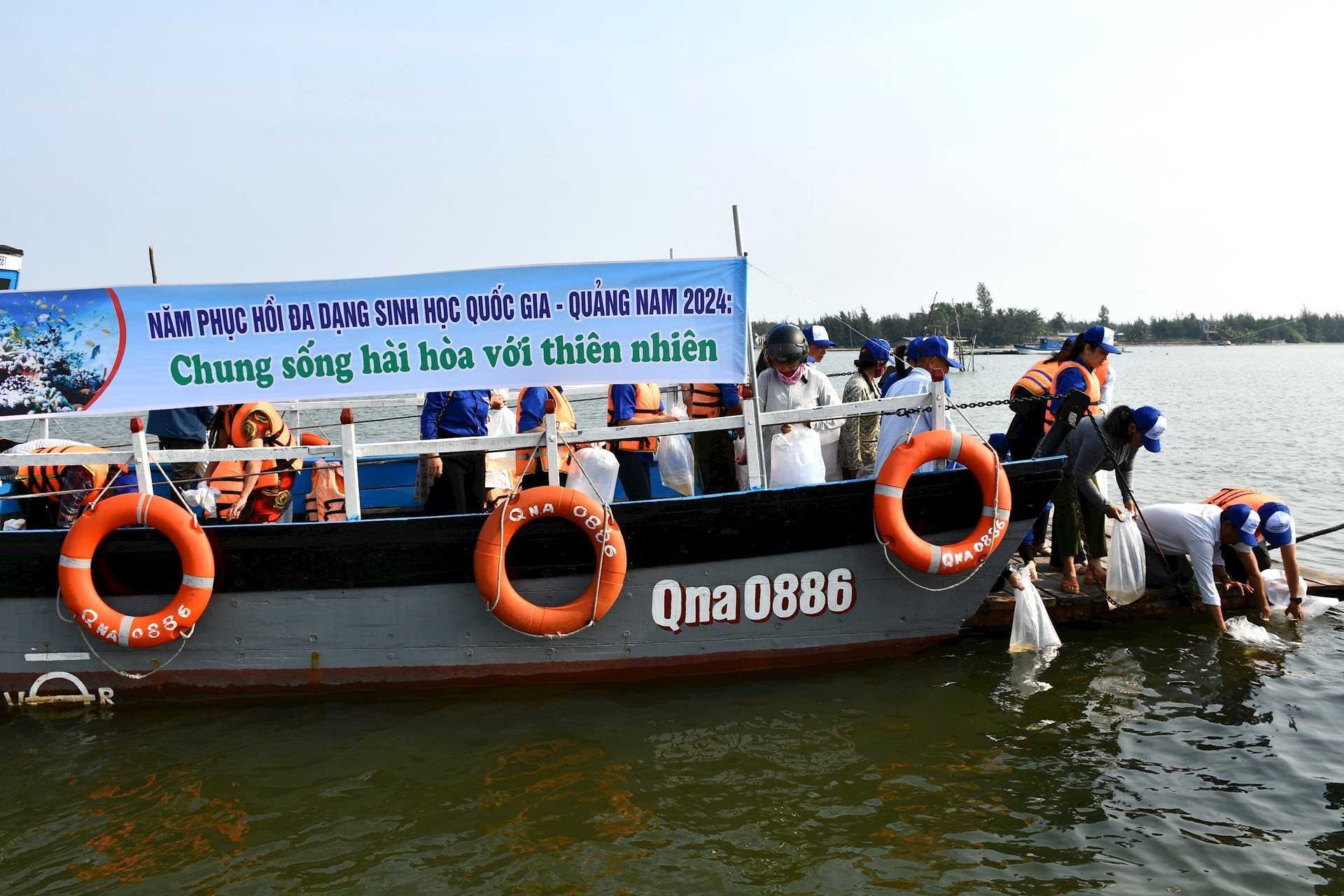Biodiversity restoration in Quang Nam
(QNO) - The regeneration and development of aquatic resources by releasing breeds into the waters has contributed to biodiversity restoration and preservation in Quang Nam.

Regeneration and development of aquatic resources
On the occasion of the 65th anniversary of Vietnam’s fishery tradition (April 1, 1959-2024), the Quang Nam Department of Agriculture and Rural Development has recently released more than 350,000 giant tiger prawn seeds and over 7,000 brackish fish individuals into the waters of Cua Lo (Tam Hai, Nui Thanh).
This annual activity is aimed at regenerating and developing aquatic resources, restoring coastal biodiversity, and creating livelihoods for local communities.
The activity attracts the attention and support of both experts, local authorities, and residents.
In Hoi An, 300,000 giant tiger prawn seeds have been released into the Bay Mau nipa palm forest. This activity is regularly carried out in order to regenerate aquatic resources in the mangrove nipa palm forest in Cam Thanh commune.
It also helps raise local awareness of ensuring the balance between the exploitation and preservation of aquatic resources.
Raising conservation awareness
According to Pham Viet Tich, Director of the Quang Nam Department of Agriculture and Rural Development, marine resources and creatures are at risk of depletion due to negative impacts from human activities, including the imbalance between exploitation and regeneration capacities.
So, Quang Nam is making every effort to restructure the fisheries sector for sustainable development.

Quang Nam is focusing on creating the balance between exploitation, farming, and conservation by building ecosystems.
The province is attempting to protect spawning areas, prohibiting the exploitation of young and immature fish, protecting ecological diversity, and avoiding overexploitation.
Besides prohibiting the use of poisons, explosives, electric shocks, and fishing nets with mesh sizes smaller than prescribed, Hoi An releases aquatic species into natural waters, contributing to the restoration, regeneration, and development of aquatic resources for sustainable livelihoods.
